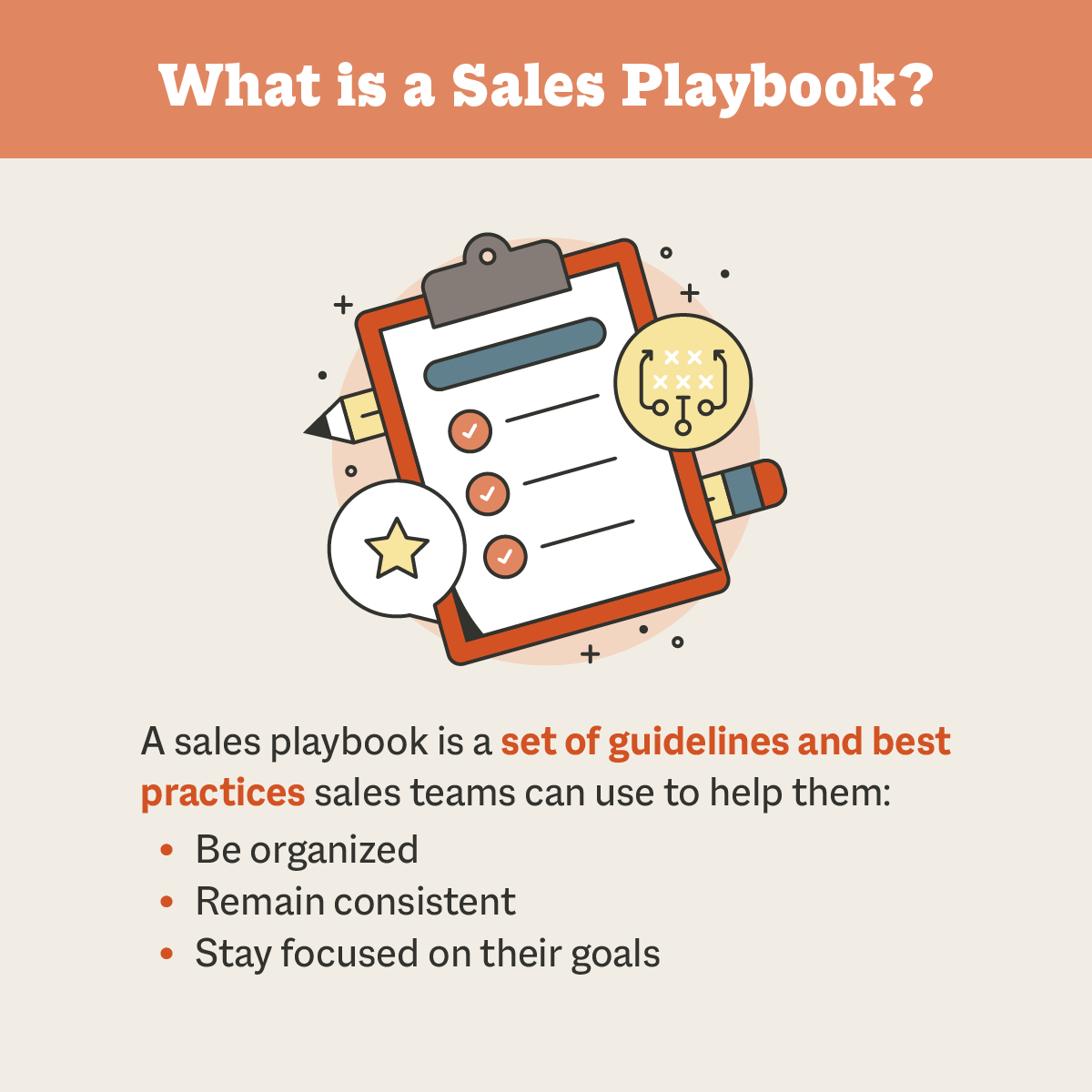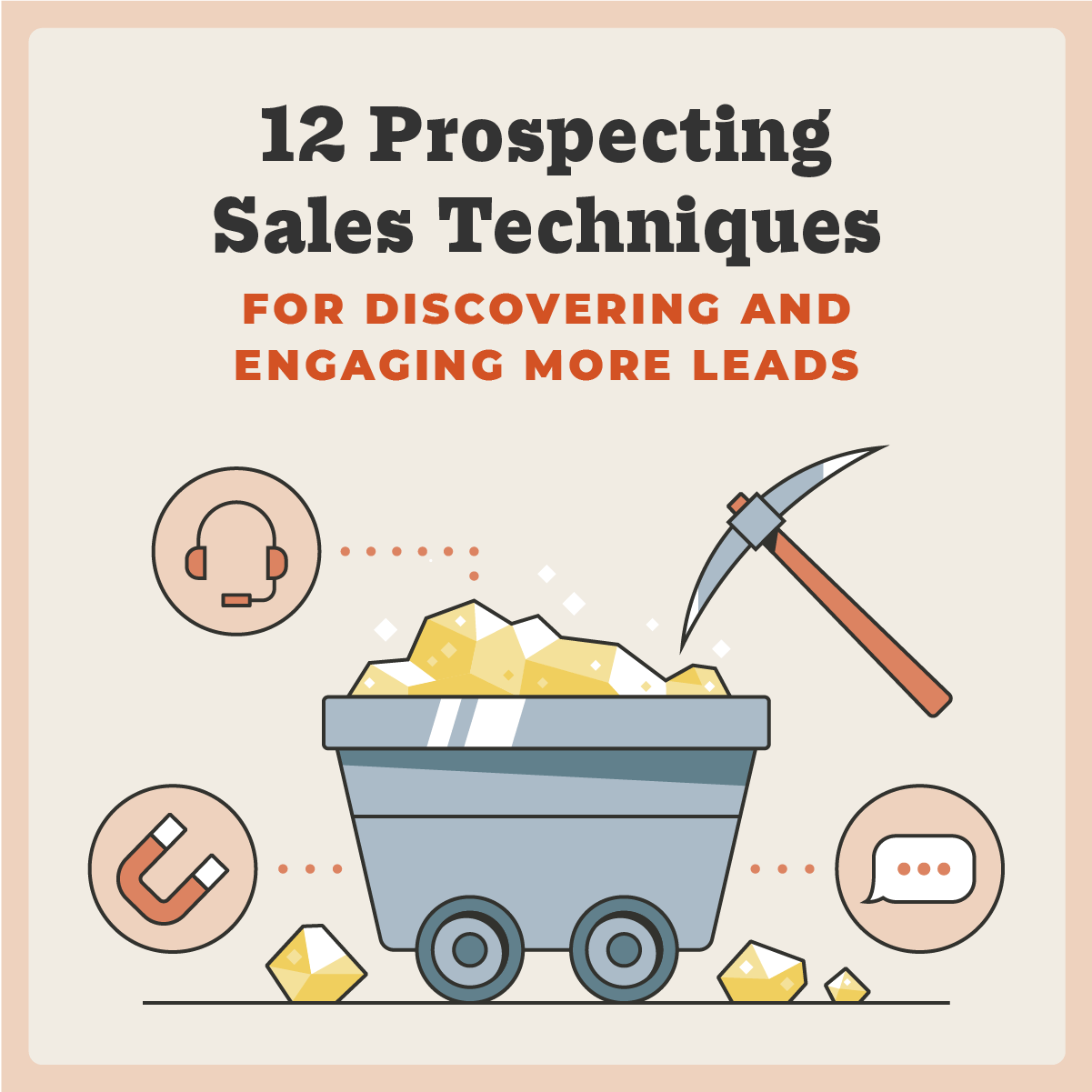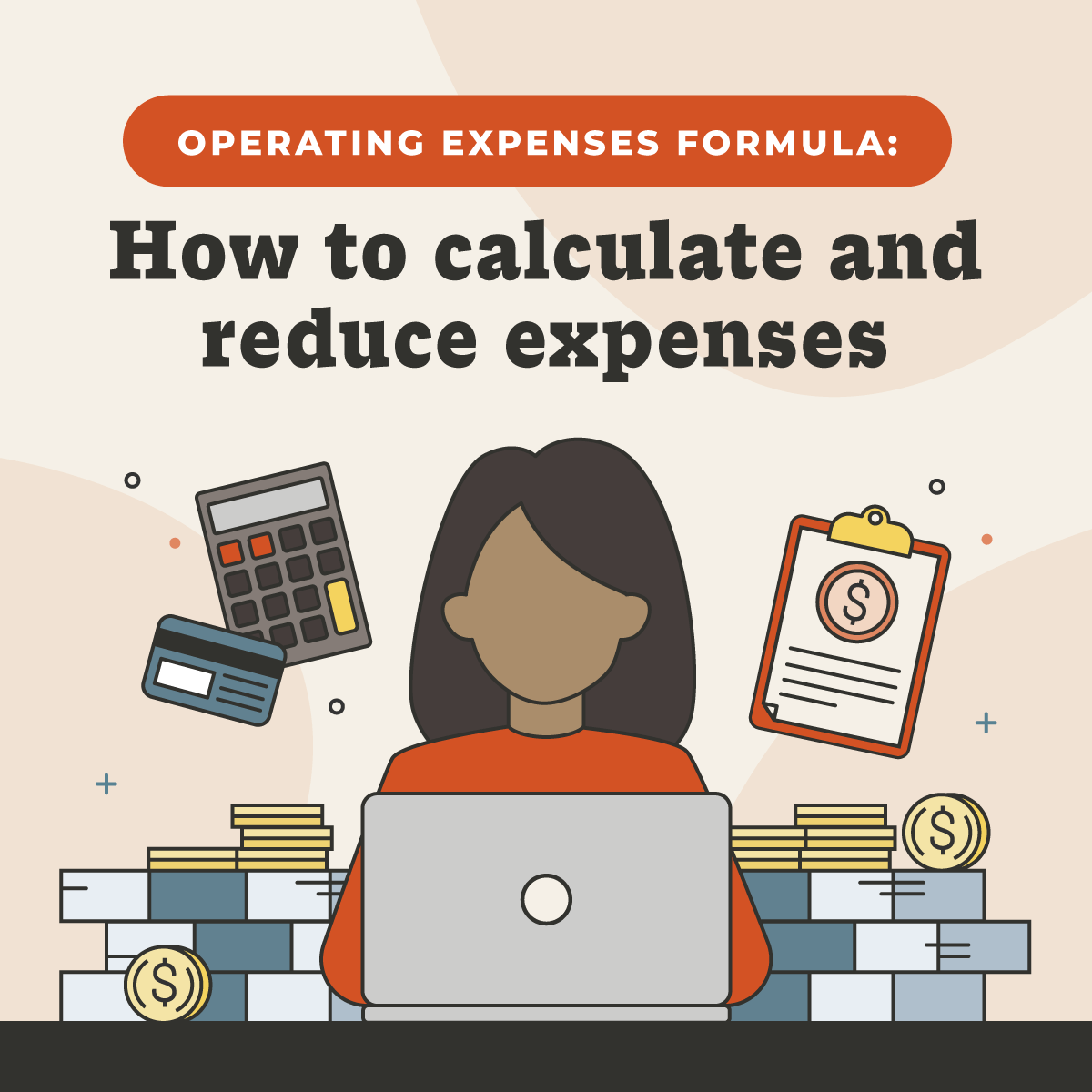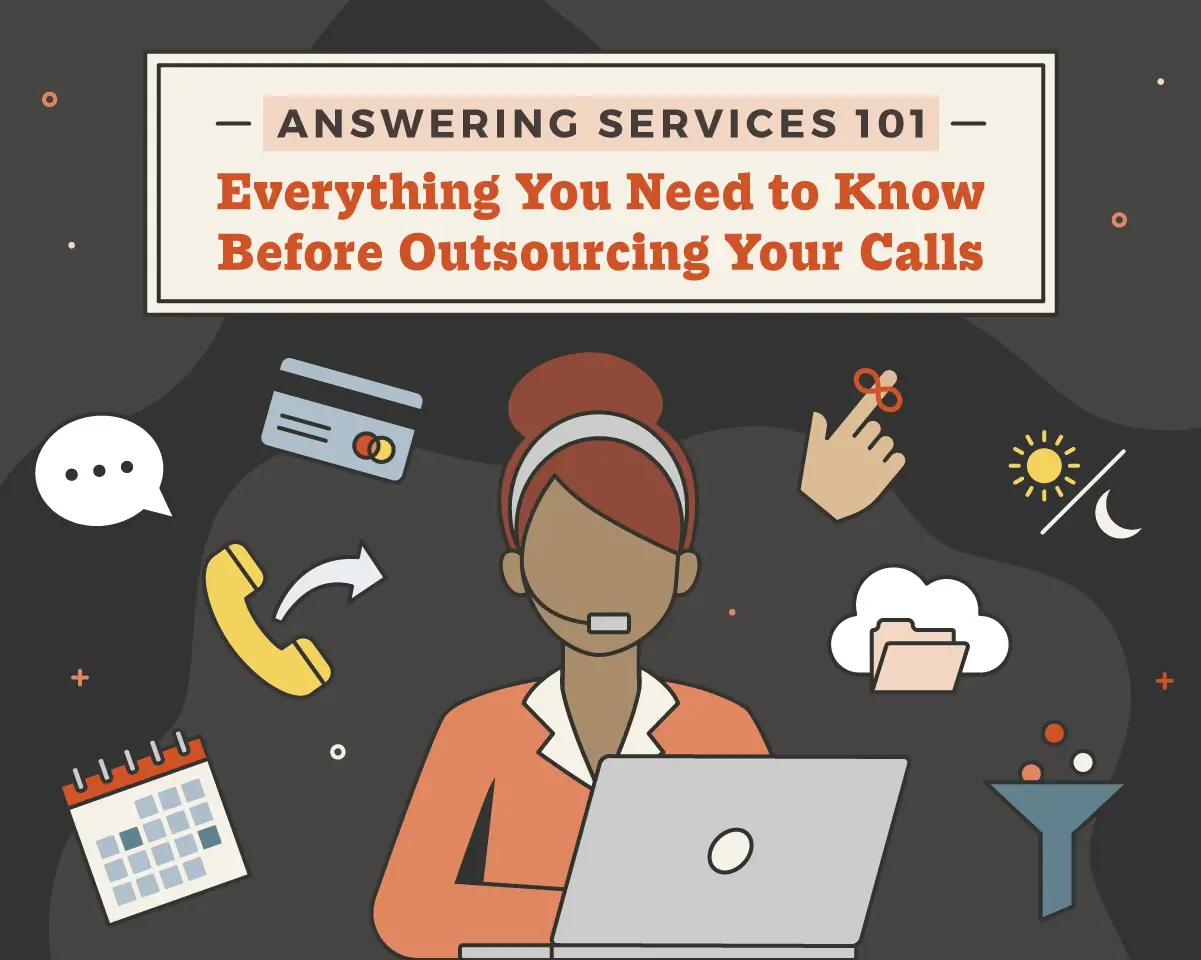What is a Sales Playbook? + Free Template

A sales playbook is an essential tool for any sales team, providing a comprehensive guide to your business's sales process and strategies.
Without a sales playbook, your team won’t have the valuable information they need to stay organized, consistent, and focused on their goals. In fact, 68% of salespeople think there is a lack of structure in their sales processes.
Keep reading to learn more about what a sales playbook is, what should be included in one, and a template with examples that’ll help you create a sales playbook to maximize your team’s success.
Table of Contents
- What is a sales playbook?
- What is a sales play?
- What is included in a sales playbook?
- Company overview
- Goals and KPIs
- Customer profile
- Product or service description
- Step-by-step sales process
- Your unique selling point (USP)
- Lead qualification criteria
- Tools and other sales resources
- Sales playbook template
What is a sales playbook?
A sales playbook is a set of guidelines and best practices that help sales teams stay organized and focused on their goals. It's essentially a manual full of steps, procedures, and resources that provides a company framework for sales reps to follow during each phase of the sales process.
It also helps ensure consistency in the sales process, allowing your sales reps to quickly and easily access the information they need to help move leads through the sales funnel. A sales playbook can also help improve team performance by providing a clear set of expectations and guidelines for reps to follow.

What is a sales play?
A sales play is a specific action or strategy a salesperson can use in the sales process. It’s typically a well-defined, step-by-step process that is designed to maximize the chances of success.
A sales playbook is a collection of sales plays that are organized into a comprehensive guide for salespeople. It is designed to provide salespeople with a set of strategies and tactics to use in different sales situations.
If you are writing a sales playbook, for instance, one of your sales plays might be about prospecting. This play should emphasize specific strategies and tools, such as prospecting lists, that reps can use to find ideal prospects on a certain platform or channel.
What is included in a sales playbook?
A sales playbook typically includes branded guidelines and strategies for each stage of the sales process, including prospecting, qualifying leads, closing deals, and managing customer relationships.
It may also include scripts for sales calls, email templates, and other resources to help sales reps close deals more effectively. Below we’ve outlined eight key sections you should include in your sales playbook to ensure your sales team remains organized and focused on their goals.

1. Company overview
The first thing you’ll want to include in your sales playbook is a company overview. This section should include high-level information about your company, including:
- Mission and value statement: Describe your company’s story, your mission statement, and the overall vision of your company.
- Team structure: Include details on the structure of the sales organization, the managers of each team, and the goals reps and teams are expected to achieve.
- Relevant company history: Include any relevant information such as when the company was founded, key milestones, and any awards or recognition the company has received.
You could also include brief information about your offerings and target customers in this section, but you’ll expand on those topics within other sections of your sales playbook.
The information above should help you get started, and feel free to add any other relevant information that will help your salespeople better understand your company and offerings.
2. Goals and KPIs
A goals and KPIs section of a sales playbook should cover the overall goals of the sales team, the specific key performance indicators (KPIs) that will be used to measure success, and the strategies and tactics that will be used to achieve those goals.
It should also include any relevant metrics that will be tracked, such as customer satisfaction, sales volume, and revenue. Additionally, this section should provide guidance on how to interpret and use the KPIs to inform sales decisions.
For example, if you’ve discovered that reps who make over 50 calls a day are much more likely to hit quota at the end of each month, then you could include that information in this section to provide reps with target goals.
3. Customer profile
A customer profile section in a sales playbook typically includes various information about your target customer. This could include:
- Demographic information: Include your target customer’s age, gender, job title, income level, interests, and other relevant demographic information.
- Buying habits: List typical behaviors such as what products your target customers are likely to purchase, how they prefer to shop, and what motivates them to make a purchase.
- Engagement tactics: Include information about how to best reach and engage with the target customer, such as what channels they prefer to use and what messaging resonates with them.
4. Product or service description
This was briefly covered in the company overview section, but you’ll want to expand on your company offerings within the sales playbook. In this section, you should discuss every product or service representatives are expected to sell.
You’ll want to include a detailed overview of the product or service, its features and benefits, pricing, and any other relevant information that can help your sales reps understand the product or service and how to effectively sell it.
Most importantly, you’ll want to include an outline of how your product or service solves a problem or pain point that a user may have. Remember, when you’re selling something, the focus should be about the buyer rather than the offering.
You should also include customer success stories or case studies that demonstrate the value of the product or service or provide real-world context of how the product or service is beneficial.
5. Step-by-step sales process
In this section, you’ll want to outline each step of your sales process, including the customer journey, from the initial contact to the closing of the sale. This includes activities such as prospecting, lead generation, lead nurturing, and so on.
For each sales process, you’ll also want to:
- Establish best practices: Establish best practices for each step of the sales process, including client communication, sales techniques, and follow-up procedures.
- Set goals and objectives: Set goals and objectives for each step of the sales process, including sales targets and customer satisfaction metrics.
- Create templates and scripts: Create templates and scripts for each step of the sales process, including customer email templates, outbound call scripts, talking points for sales presentations, and so on.
- Develop a tracking system: Develop a tracking system to monitor progress and performance at each step of the sales process.
- Monitor and adjust: Monitor the sales process and adjust as needed to ensure goals and objectives are met.
Keep this section as brief as you can for simple referencing, but also provide a link to your complete sales process document so that your team can easily access it for more information, if needed.
6. Your unique selling point (USP)
A unique selling point (USP) section of a sales playbook should include a clear and concise description of the product or service being sold, its key features and benefits, and how it stands out from the competition.
It should also include any customer testimonials or case studies that demonstrate the value of the product or service, as well as any special offers or discounts that are available. Finally, the USP section should include a call to action that encourages the customer to take the next step in the sales process.
7. Lead qualification criteria
A lead qualification section in a sales playbook typically includes criteria for determining which leads are worth pursuing. It also includes guidelines for how to qualify leads, such as asking questions to determine their decision-making authority, needs, timeline, and budget, as well as criteria for disqualifying leads.
Additionally, it should include best practices for how to prioritize leads and how to track and measure lead qualification efforts.
8. Tools and other sales resources
A tools and sales resources section in a sales playbook should include information about the tools and resources available to sales teams to help them succeed. For instance, you’d want to discuss tools such as a customer relationship management (CRM) platform sales reps should use to ensure consistency across the board.
In this section, you’ll educate your team about how to use the tools available to them as well as best practices when using them. You can include tools such as:
- CRM software
- Sales automation tools
- Sales enablement platforms
- Training materials
- Prospecting tools
- Call scripts
- Email templates
- Case studies
- Demo videos
- Product pages
You can also include links to any relevant documents sales teams can use to access these resources.
Sales playbook template
As you might expect, a sales playbook can be extensive given all the information that should be included. For those who are required to create or use them, a lengthy guide or large PDF document can be quite frustrating and overwhelming.
To be frank, your sales team doesn’t want to dig through extensive documents and read through all the information about every procedure — that’ll only take away valuable time from their day when they should be actively selling.
Instead, you can use this free sales playbook template that includes all the key points your sales team needs to know. As a result, your team will have all the information they need in one location, saving them time by serving as a quick reference whenever necessary.
Every business is different and has its own unique processes, so you can edit this template to fit your brand’s specific guidelines. Make sure you include links to valuable resources such as how-to videos for a specific sales process, email templates, call scripts, and so on.


Trust your sales process with Smith.ai
A sales playbook is an invaluable tool for any sales team, as it provides a framework for sales reps to follow, helping them stay organized and focused on their goals. By creating a sales playbook, you can ensure that your sales team is well-equipped to succeed in their roles.
If you are looking for more ways to improve your sales process, you could outsource to Smith.ai virtual receptionists, who are a reliable and trustworthy option for managing your sales process and outreach campaigns.
Our live agents are highly trained professionals who can adapt to your sales techniques and processes with ease, so you can trust that your business endeavors will be handled with the utmost care and professionalism.
Book a consultation to see how our virtual receptionists can help your business grow and achieve its goals.
Sources: SaaS Mag
Related Posts
















.svg)
